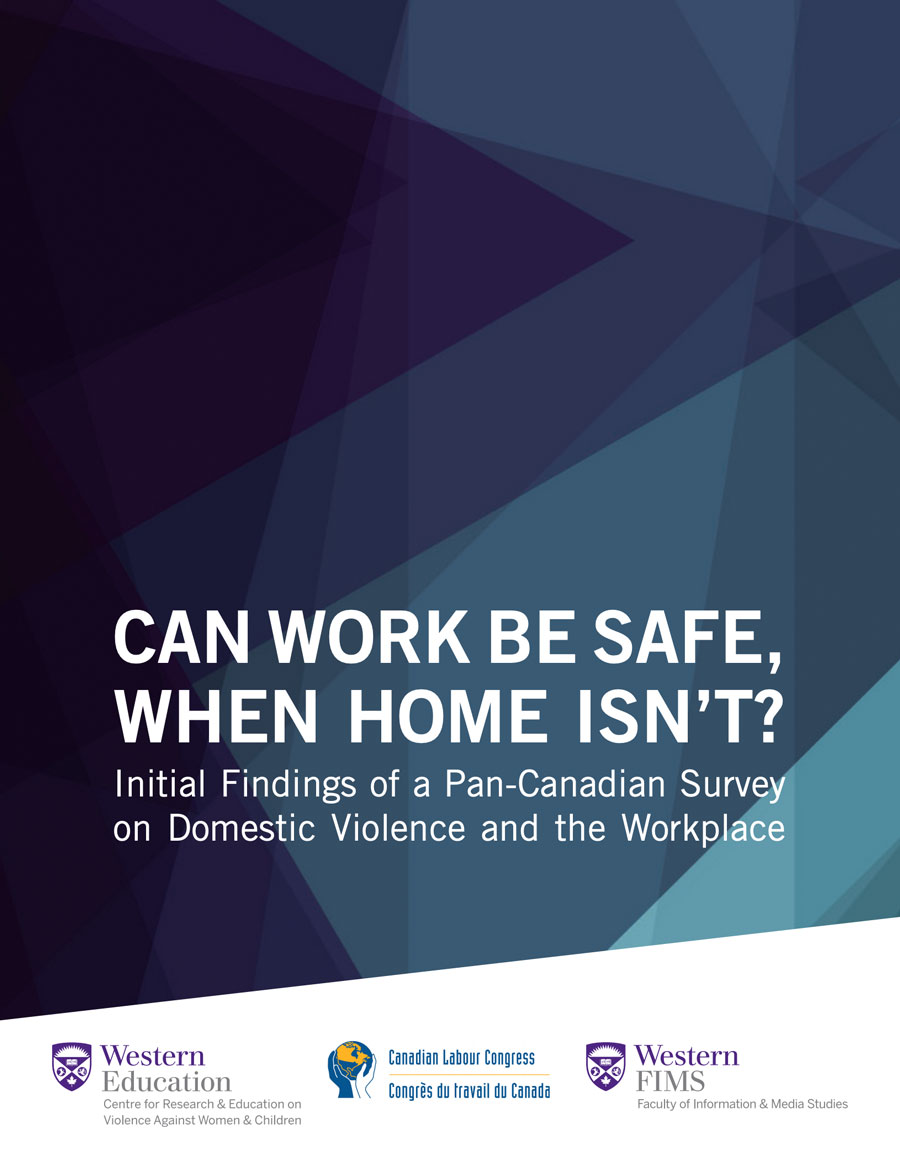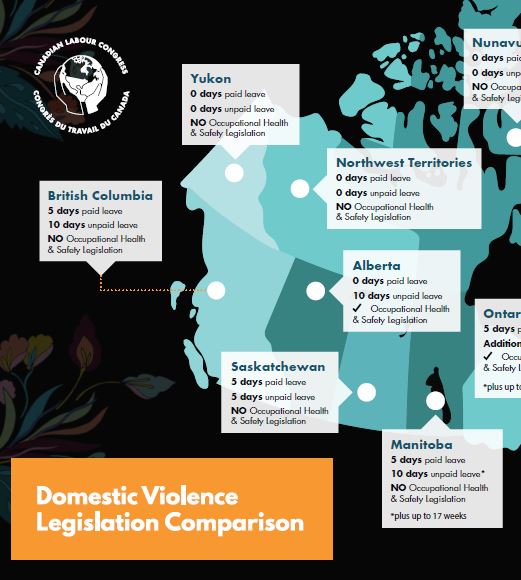Domestic violence (DV) is a pattern of behaviour used by one person to gain power and control over another with whom they have or have had an intimate relationship. It can include physical, emotional, sexual, financial, psychological and/or spiritual abuse, as well as stalking or harassment. It exists in intimate relationships between people of any gender and may be between people who are married, divorced, common law, separated, or dating.
We partnered with researchers at the University of Western Ontario and conducted the first ever Canadian survey on domestic violence in the workplace. We did this because there is almost no data on this issue in Canada. This video talks about the experience and highlights the key findings. Content Note: This video contains descriptions of domestic violence and how it impacts people who have experienced violence.
- 1 in 3 workers have experienced domestic violence in their lifetime.
- Of those who had, 82% found that domestic violence negatively affected their work performance (through distraction, tiredness, lateness, interruptions at work from the abuser, poor concentration and absenteeism).
- 53% said they experienced violence at or near the workplace.
- 38% reported that domestic violence affected their ability to get to work.
- 37% said that it negatively impacted their co-workers.
- 8.5% lost their job as a result of domestic violence.
How does domestic violence impact people at work?
One in three workers have experienced domestic violence, and for many, the violence follows them to work. Often abusers will try to prevent their partners or ex-partners from getting to work, causing them to be late or have to miss work. Abusers may also excessively call, email, or text victims while they are at work, come into the workplace, or stalk the victim.
Read more
Workplace survey report
Key findings of a pan-Canadian survey on domestic violence and the workplace.
Download PDFUnion reps and stewards
Click to open the link
Warning signs
Who is most at risk for domestic violence? All domestic violence is harmful. Although people of any gender can experience domestic violence, women and gender-diverse folks are most commonly subjected…Click to open the link
What to do
What to do when you’ve identified warning signs that a member may be being abused? The most important next step when you’ve recognized warning signs of domestic violence is understanding…Click to open the link
Information for Leaders and Negotiators

Domestic violence legislation map
Domestic violence legislation comparison map of Canada
Download PDFModel language for collective agreements
These model clauses are suggested language that unions can use to develop proposals on domestic violence for collective bargaining. Using the principles and language adapted from precedents in Canada and…Click to open the link
Collective bargaining
Domestic violence is a complex problem with no simple, single solution. Preventing and addressing domestic violence requires effort at many different levels. Collective bargaining can play an important role in…Click to open the link